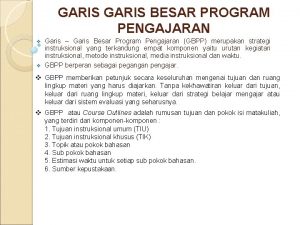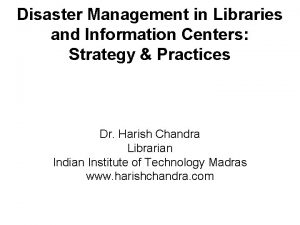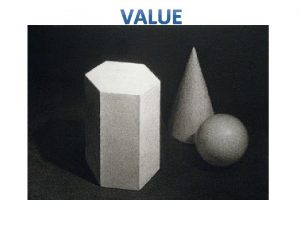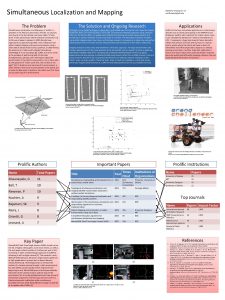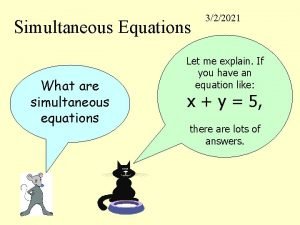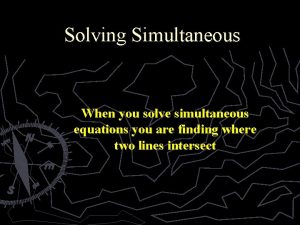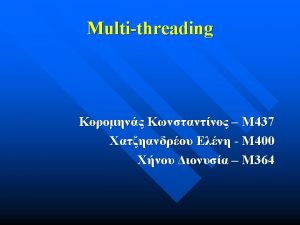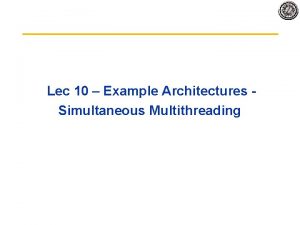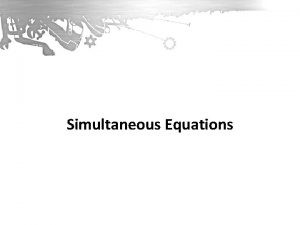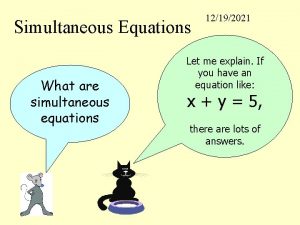Simultaneous Interpreting Asst Prof Mohammad K AlAskari Outlines

















- Slides: 17

Simultaneous Interpreting Asst. Prof. : Mohammad K. Al-Askari

Outlines of the Presentation q q q q q What is simultaneous interpreting? Interpreting types Simultaneous VS. Consecutive Interpreting Equipment Strategies Difficulties Challenges Needed skills Recommendation Sample of interpreting 2

What is Simultaneous Interpreting? Rendering a spoken or signed message into another spoken or signed language, preserving the register and meaning of the source language content. (ISO, 2014) SI is a mode of interpreting in which the speaker makes a speech and the interpreter reformulates the speech into a language her/his audience understands at the same time (or simultaneously). 3

Interpreting Types: Consecutive Interpreting It is the opposite of simultaneous interpreting, as it does not occur at the same time the source language speaker is talking, but when the speaker pauses (usually every 1 -5 minutes) then the interpreter repeats what is being said in the target language. This type of interpreting is usually used in smaller business meetings and court hearings. Escort/Travel Interpreting Interpreters accompany travelers, often business people, on their trips and to meetings. In addition, the interpreter acts as cultural intermediary who help their client coping with foreign culture 4

Interpreting Types: Whisper Interpreting Whisper interpreting or “chuchotage” interpreting is similar to the simultaneous interpreting, with the only difference that with this type of interpreting, the interpreter is not in a booth wearing headphones, but is sitting next to the person or persons that they interpret for. While the source language speaker is talking, they quietly talk into the target speaker’s ear. Scheduled Telephone Interpreting (or Over-the-Phone Interpretation) This type of interpreting can be both consecutive and simultaneous. One aspect is fixed, however; the interpreter is not physically present in the room, but translates via telephone. Additionally, there is On-Demand Phone Interpreting is conducted over the phone, this type is mainly used by people or organizations that need immediate translations to communicate properly. 5

Simultaneous VS. Consecutive Interpreting : Simultaneous Interpreting Consecutive Interpreting An interpreter renders the message to the audience, while the other speaks A speaker makes pauses and the interpreter translates the said words The speaker does not make any pauses It is used at events with small number of participants Interpreters work in pairs and replace each other every 15 -20 minutes Best suited for conferences and meetings in which a great deal of information has to be conveyed. The use of audio equipment also means that there is no limit to the number of people who can participate Best suited for situations involving a small number of people, or where a personal touch is required. Examples would be business meetings, press conferences, interviews, teleconferences, or any type of one-onone exchange. 6

Equipment: Simultaneous interpreting requires the use of specialist equipment (booths, headsets, transmitter, etc. ). The interpreting takes place as the speaker gives their speech, with the delay between the speech and the interpreting averaging less than 5 seconds. Consecutive interpreting requires microphones, wireless headsets, projectors and screens can make your conference, hearing, exam or other meeting proceed smoothly in two or more languages. 7

Simultaneous Interpretation Strategies: Li, Xiangdong. (2015) mentioned the following strategies in interpreter training: Strategy Specific Strategy Knowledge-based strategies non-linguistic anticipation, inference, resorting to world knowledge, visualization, personal involvement, etc. Language-based strategies chunking/segmentation, restructuring/changing order, transcoding, reproduction, linguistic anticipation, parallel reformulation/substitution, morpho-syntactic transformation, transfer, etc. Meaning-based strategies compression/condensation/summarizing/filtering (selection of information, deletion, generalization, simplification), text expansion/addition/ elaboration (explanatory additions, additions to maintain coherence), adaptation, neutralization/evasion, omission/skipping/message abandonment, approximation/ attenuation, paraphrasing/explaining, etc. Delivery-based strategies décalage/time lag/extending or narrowing, waiting/delaying response/tailing/stalling (waiting with fillers), repetition, use of prosodic elements (pause distribution, intonation), repair (self-correction), no repair (decision for no repair), monitoring, etc. 8

Difficulties Faced by Interpreters: Listening and Understanding: Ø Lack of understanding of the source speech Ø Numbers Ø Lack of common sense Ø Speed of delivery of the source speech Ø Unfamiliarity with the topic Ø Sound problems Ø Length of the source speech Ø Information density Ø Lack of practice Ø Lack of attention / concentration 9

Difficulties Faced by Interpreters: Expressing and reformulating: Ø Feeling nervous Ø Lack of confidence Ø Overuse of connectors Ø Problems of expressing oneself 10

Challenges in Simultaneous Interpreting: Ø Ø Ø Listening and analysis efforts Short-term memory effort Speech production effort Intensive concentration Unexpected surprises Omitting information 11

Needed Skills: Ø Listening skills - It is the ability to accurately receive and interpret messages in the communication process of the source language. The simultaneous interpreter is doing that while formulating the target language delivery, all this in nano seconds. Ø Understanding concepts - If you don’t know what it means you won’t be able to convey it into your target language. Concepts are important. Ø Accurate structure - You may need to anticipate a sentence structure coming from the source language in order to rearrange it so it makes sense when delivering into your target language. Ø Inflection - Words have multiple meanings. Was it meant to be funny? Insulting? Choosing the right one makes a big difference 12

Needed Skills: Ø Register - English has no difference in formal you vs. the informal you, whereas other languages do. Never use the informal you unless instructed to do so. Common sense prevails here: children and teens usually prefer the informal while professionals, and the elderly prefer the formal use of “you”. Ø Mastery of terminology - Most people don’t realize that prior preparation is required for most assignments. All simultaneous interpreters must be familiar with the Words of art meaning: n. 1) specialized language with meaning peculiar to a particular profession, art, technical work, science or other field or endeavor. 2) jargon known only to people who specialize in a particular occupation Ø Cultural knowledge - Being bicultural is part of being an excellent interpreter. Your delivery will be flawless if you know your target language and its culture. 13

Recommendation to Simultaneous Interpreters: Ø Ø Ø Ø Speak quietly Do not block the speaker’s speech Interpret the main ideas Finish the phrases Avoid stage fright Look at the speaker Take notes Always remember this “Don't ever give up. Don't ever give in. Don't ever stop trying. Don't ever sell out. And if you find yourself succumbing to one of the above for a brief moment, pick yourself up, brush yourself off, whisper a prayer, and start where you left off. But never, ever give up. ” ― Richelle E. Goodrich, Eena, The Tempter's Snare 14

Samples for Interpretation Ø Nervous consecutive interpreter (check the body posture) https: //www. youtube. com/watch? v=Q 0 r 1 wvz. LMo. Y 15

Samples for Interpretation Ø Confident simultaneous interpreter (note the tone) https: //youtu. be/7 s. Ch. QUf 3 ze 0 16

Thank You! 17
 Simultaneous interpreting definition
Simultaneous interpreting definition Ksf outlines
Ksf outlines Four main components for effective outlines
Four main components for effective outlines Cjis policy and security awareness test
Cjis policy and security awareness test Anime outline
Anime outline Lesson outline for teaching
Lesson outline for teaching A clear concise document which outlines preventive
A clear concise document which outlines preventive Mucoepidermoid carcinoma pathology outlines
Mucoepidermoid carcinoma pathology outlines A business plan is a document that outlines
A business plan is a document that outlines Model un position paper outlines
Model un position paper outlines Two types of outlines
Two types of outlines Kairos talk outlines
Kairos talk outlines Acts 9 outline
Acts 9 outline Cmmi model outlines
Cmmi model outlines Pathology outline
Pathology outline Visible outlines
Visible outlines Haunted house outlines
Haunted house outlines Commercial law outline
Commercial law outline





